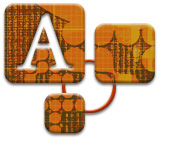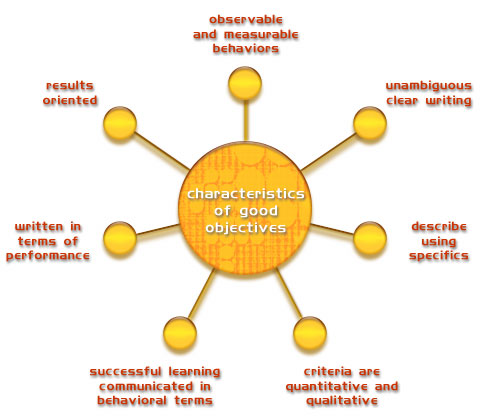|
 Topic
A4.2: Learning Objectives Topic
A4.2: Learning Objectives
The ABCD Model for Writing
Objectives
Objectives written with this model include
four distinct components:
Audience a description
of the learners for whom the instruction is intended.
Behavior a description
of the actions that will demonstrate the skill or learning.
Condition a description
of the equipment or tools that may or may not be used by the learner.
Degree a description
of the standards or criteria at which the learner demonstrates mastery.
The objective need not be written in this order (ABCD),
but it should contain all these elements.The exception to this rule is
where objectives are written in two levels. It would be redundant to
identify the audience (provided it is unchanging) in each level, so often
this information is implied in the second level after it is expressed
in the first. Let us examine each of the components in more detail:
Audience
Describe the intended learner or end user of the instruction. Often the audience
is identified only in the first level of objective (the terminal objective
or goal) because of redundancy. It is then implied throughout the remainder
of the objectives for that block of instruction.
Example: The Biology 101 student.
Example: The English Second Language student.
Example: The ABC company manager attending this seminar.
Behavior
Describes expected learner capability. Must be observable and measurable (you
will define the measurement elsewhere in the goal) The "behavior" can
include demonstration of knowledge or skills in any of the domains of learning:
cognitive, psychomotor, affective, or interpersonal.
Example: should be able to write a report.
Example: should be able to describe the steps.
Condition
Equipment or tools that may (or may not) be utilized in completion of the behavior.
Environmental conditions may also be included.
Example: given an oxygen wrench, regulator and
a tank with oxygen.
Example: given the complete works of William Shakespeare.
Example: given a group of Spanish verbs to select from.
Degree
States the standard for acceptable performance (time, accuracy, proportion,
quality, etc.)
Example: without error.
Example: 9 out of 10 times.
Example: within 60 seconds.
An effective objective is both observable and measurable.
Using words like understand
and learn in writing objectives
is generally not acceptable, because they're difficult to measure. And
if you hesitate at the opening statement, worried if you're allowed
to say the student will be able to,
or shall be able to, or
should be able to, the general
rule is that there is no rule. If you're concerned about liability in
making definitive statements like "students will be able,"
then state the objective with the verb should or shall. To download
a Microsoft Word document listing of action verbs useful in composing
objectives, click here.

 
TOP
|